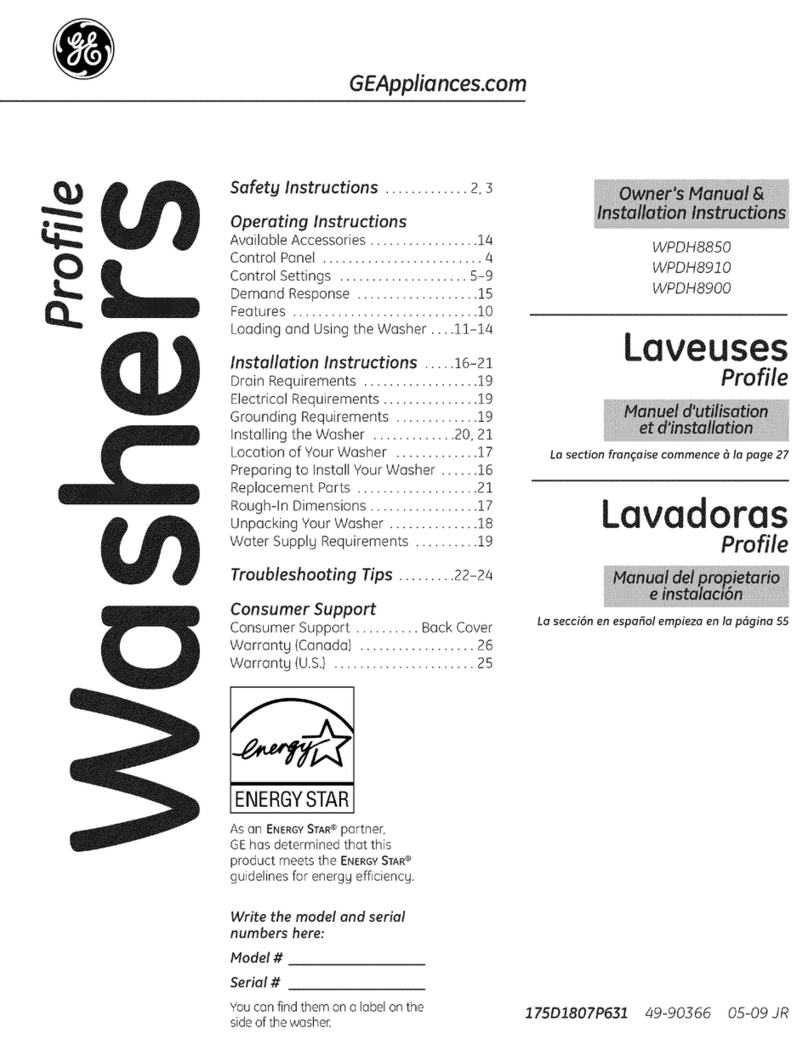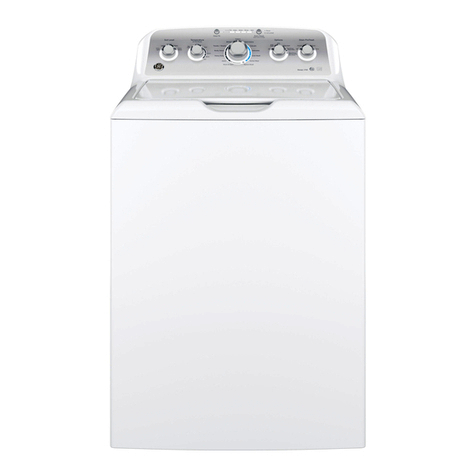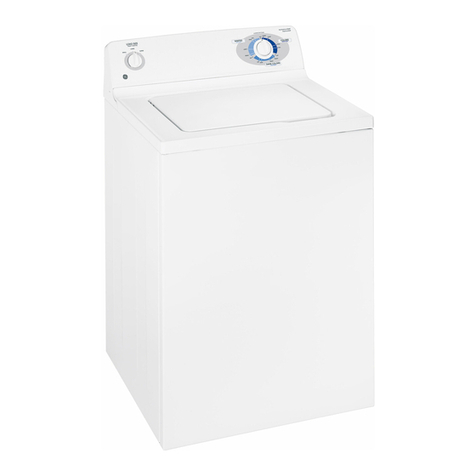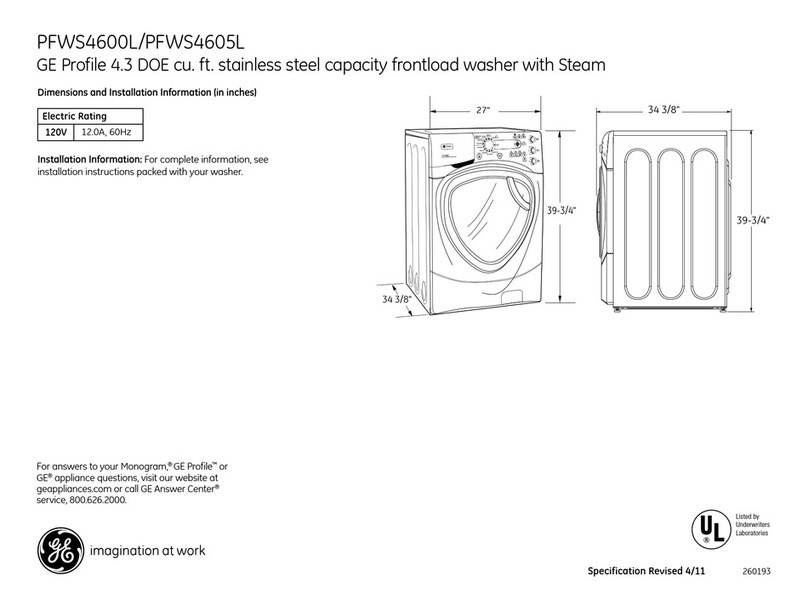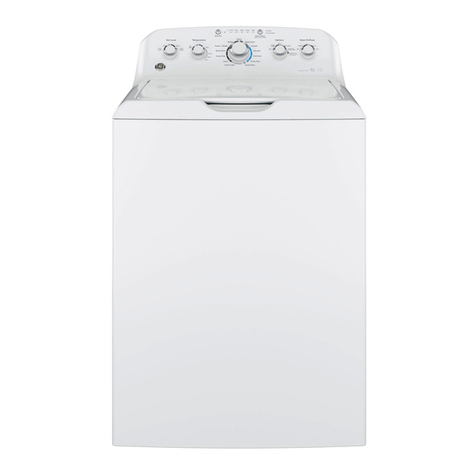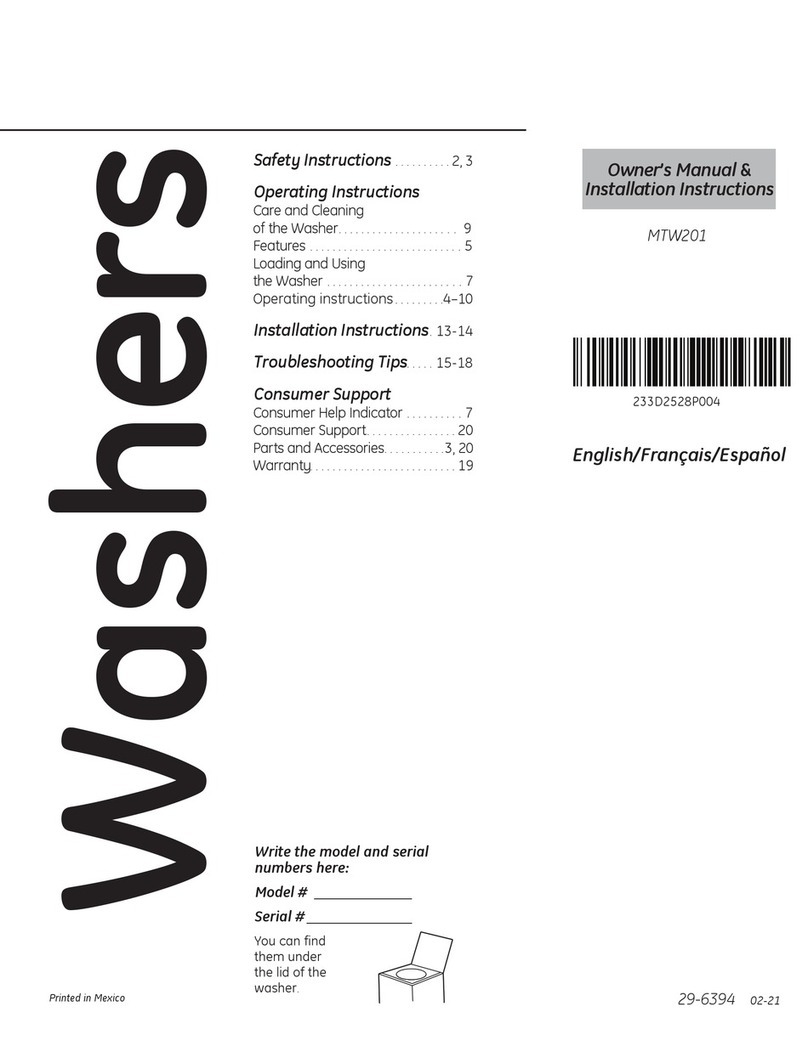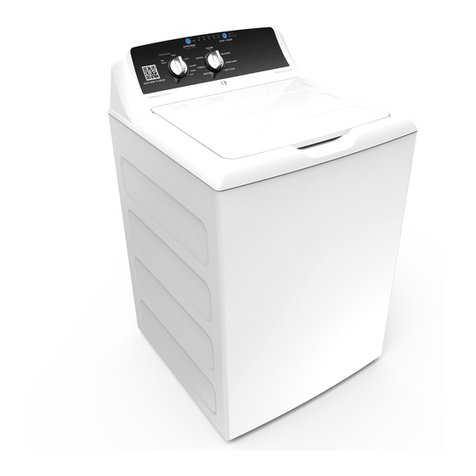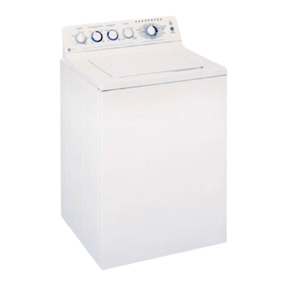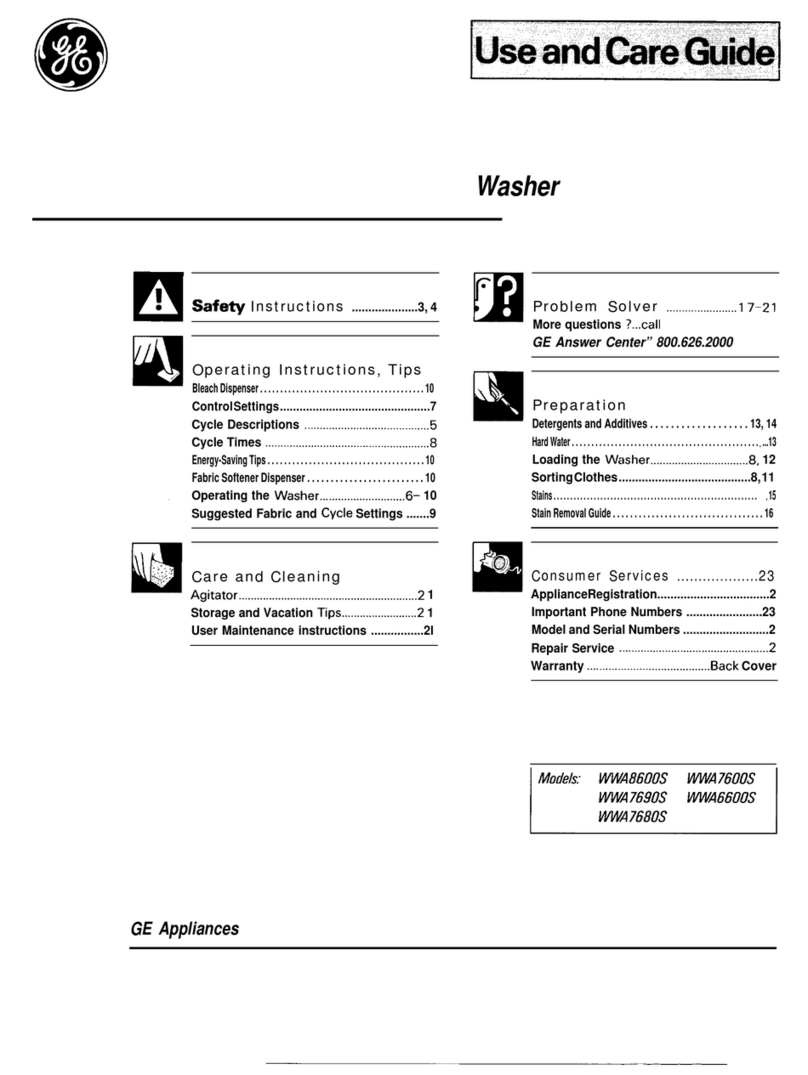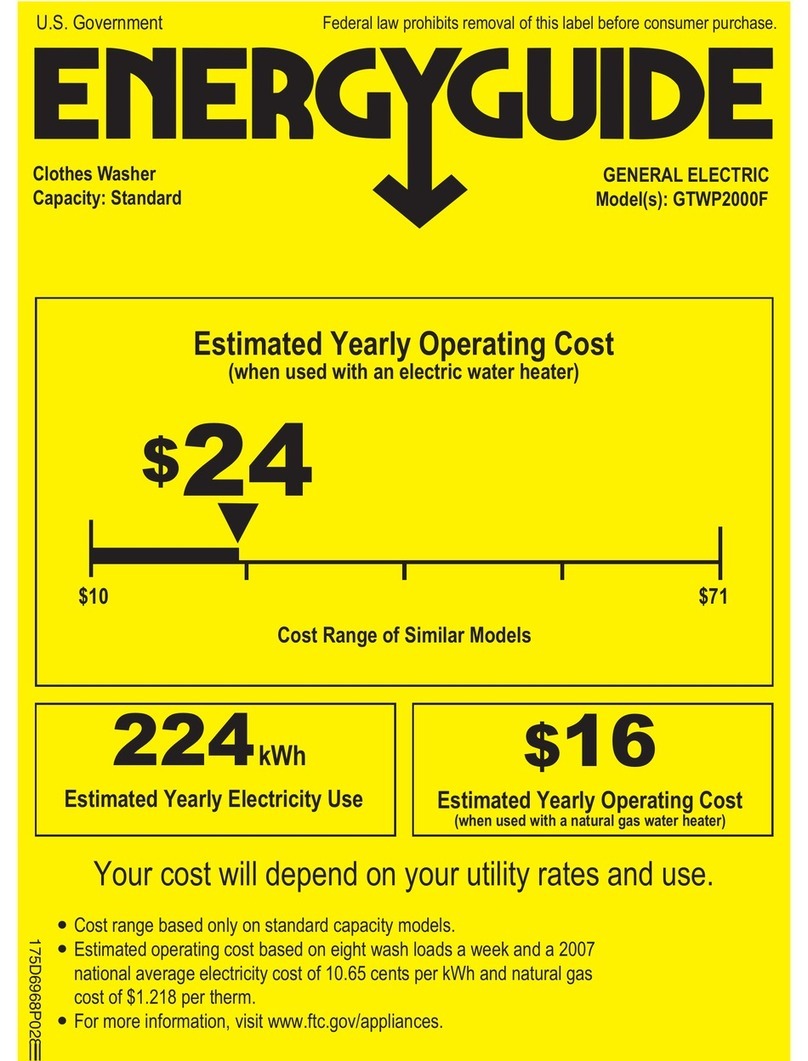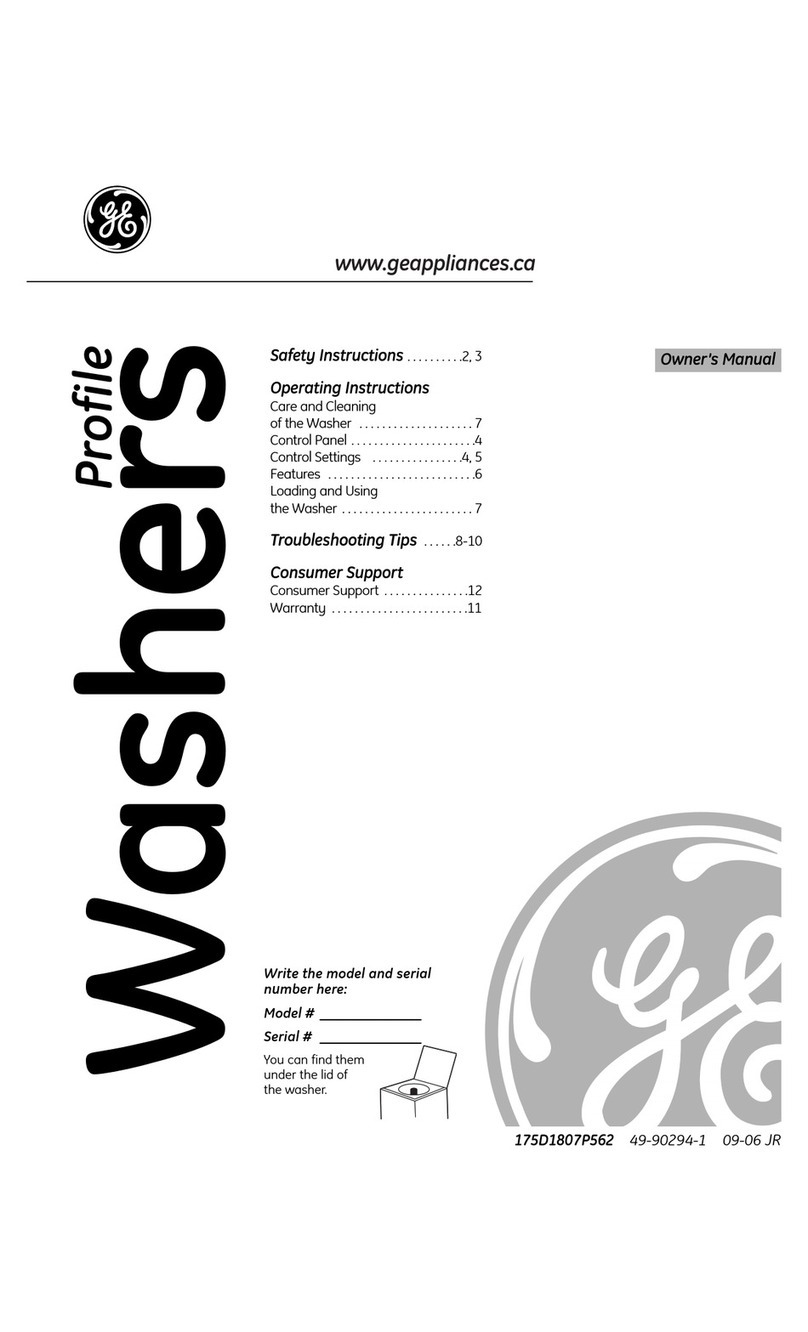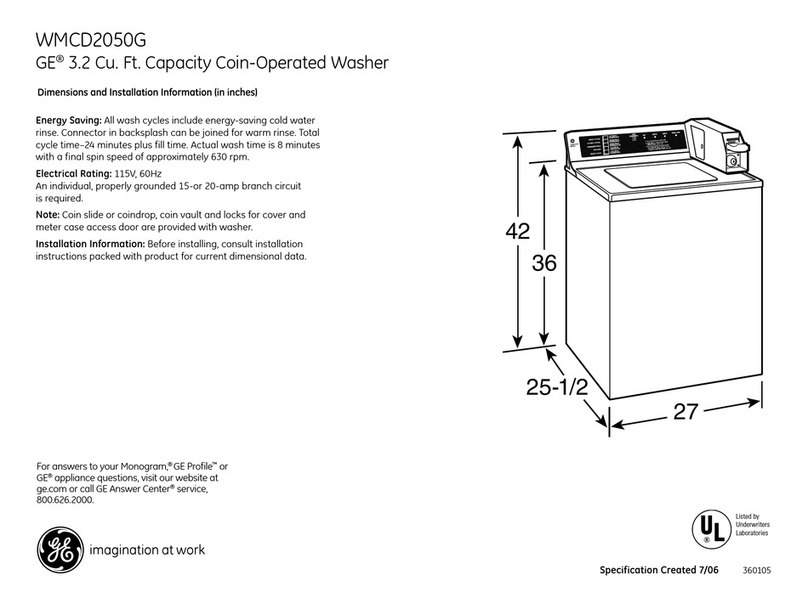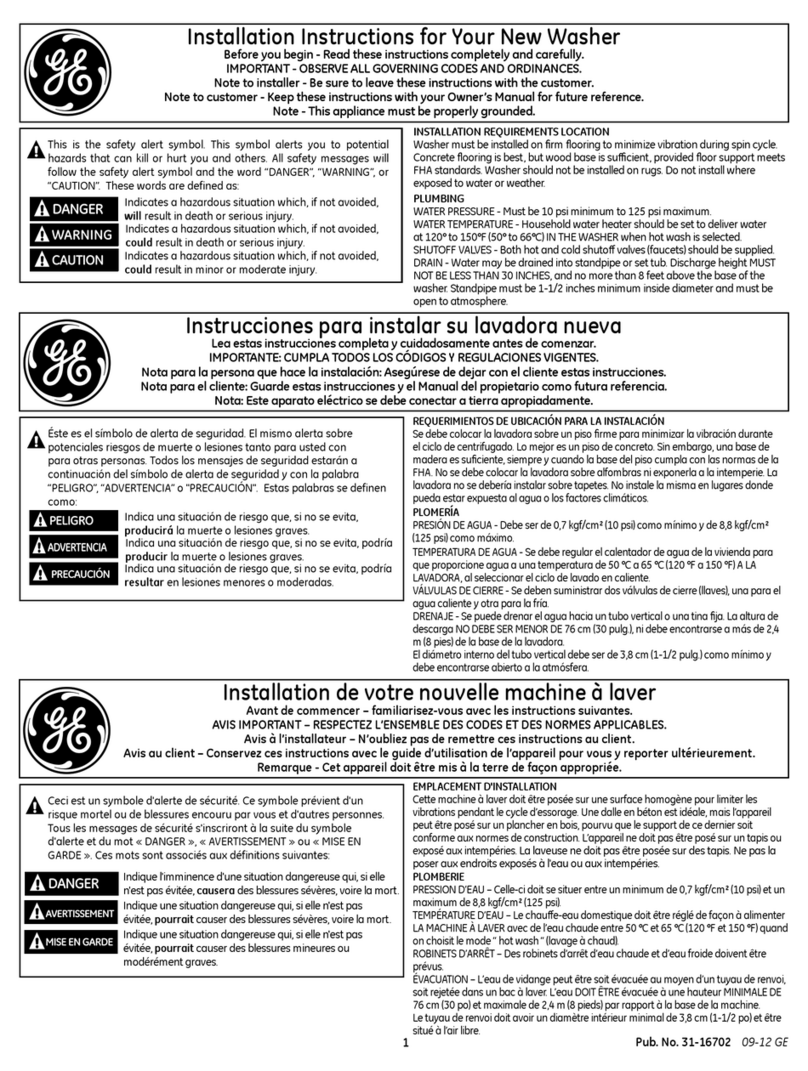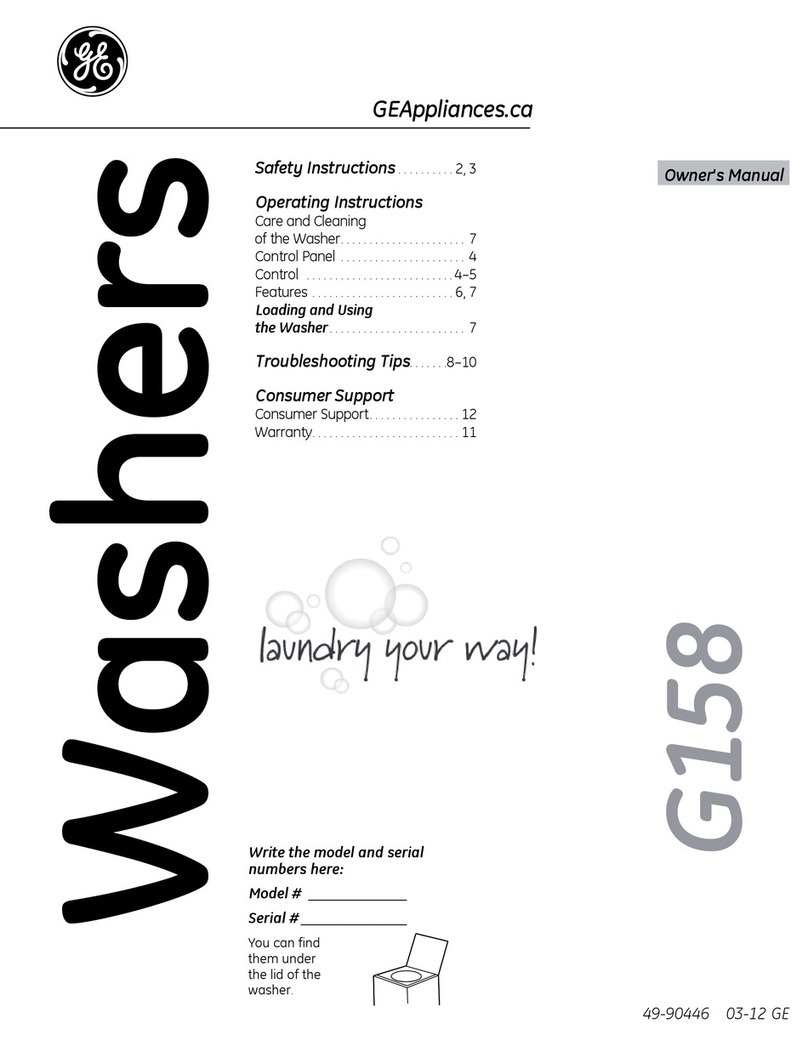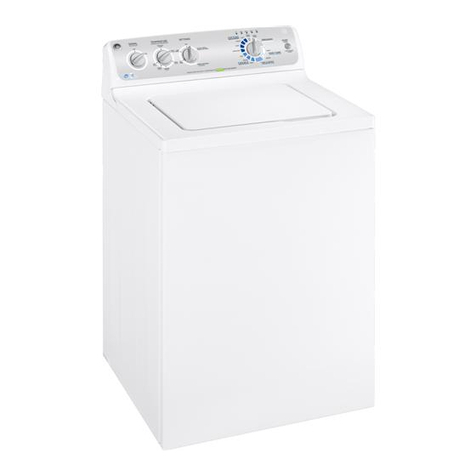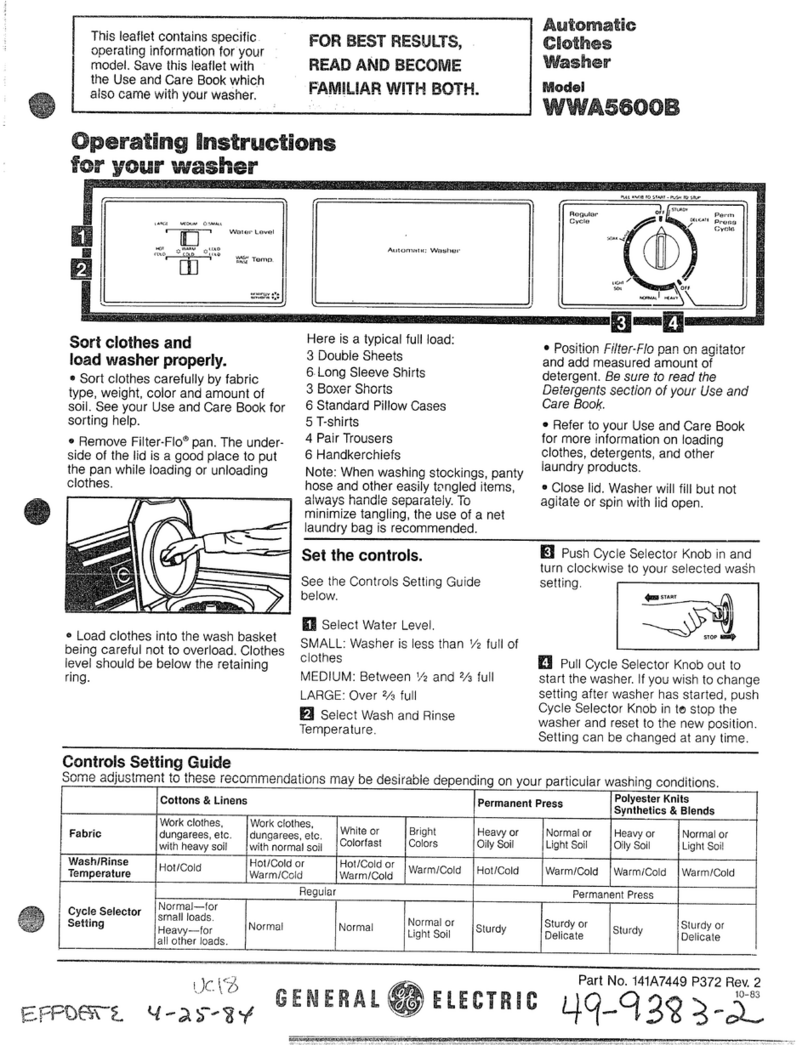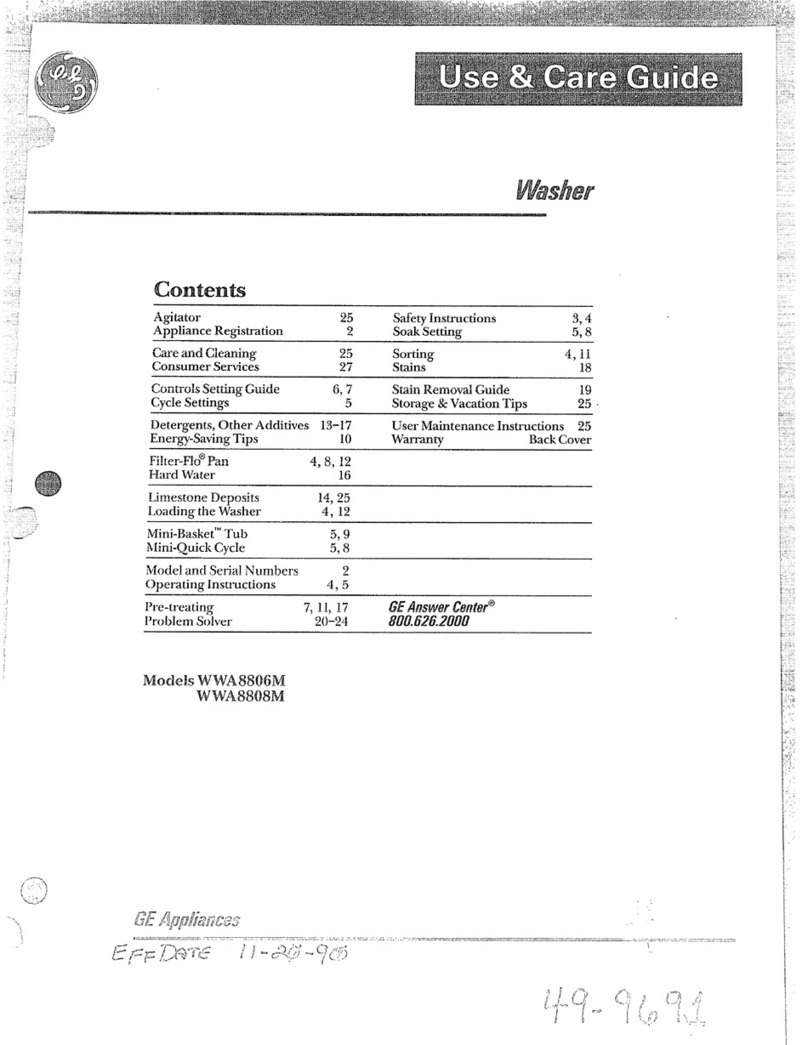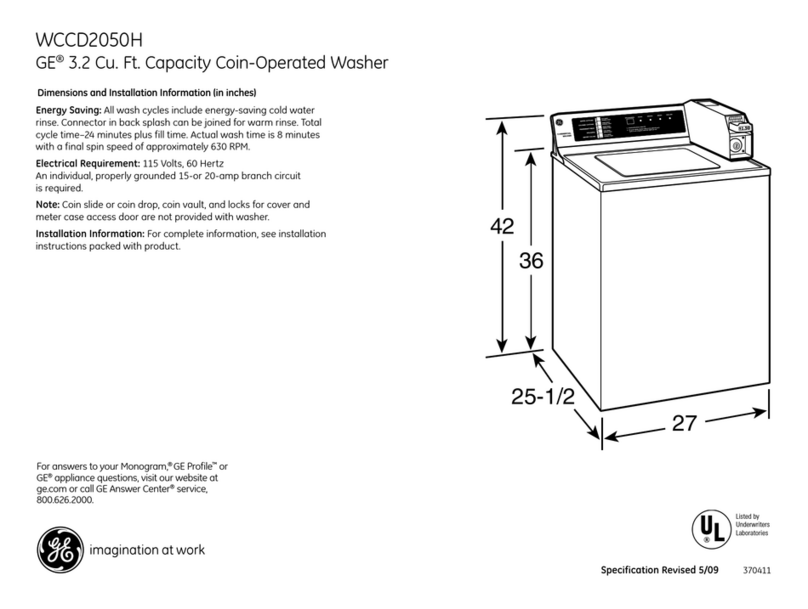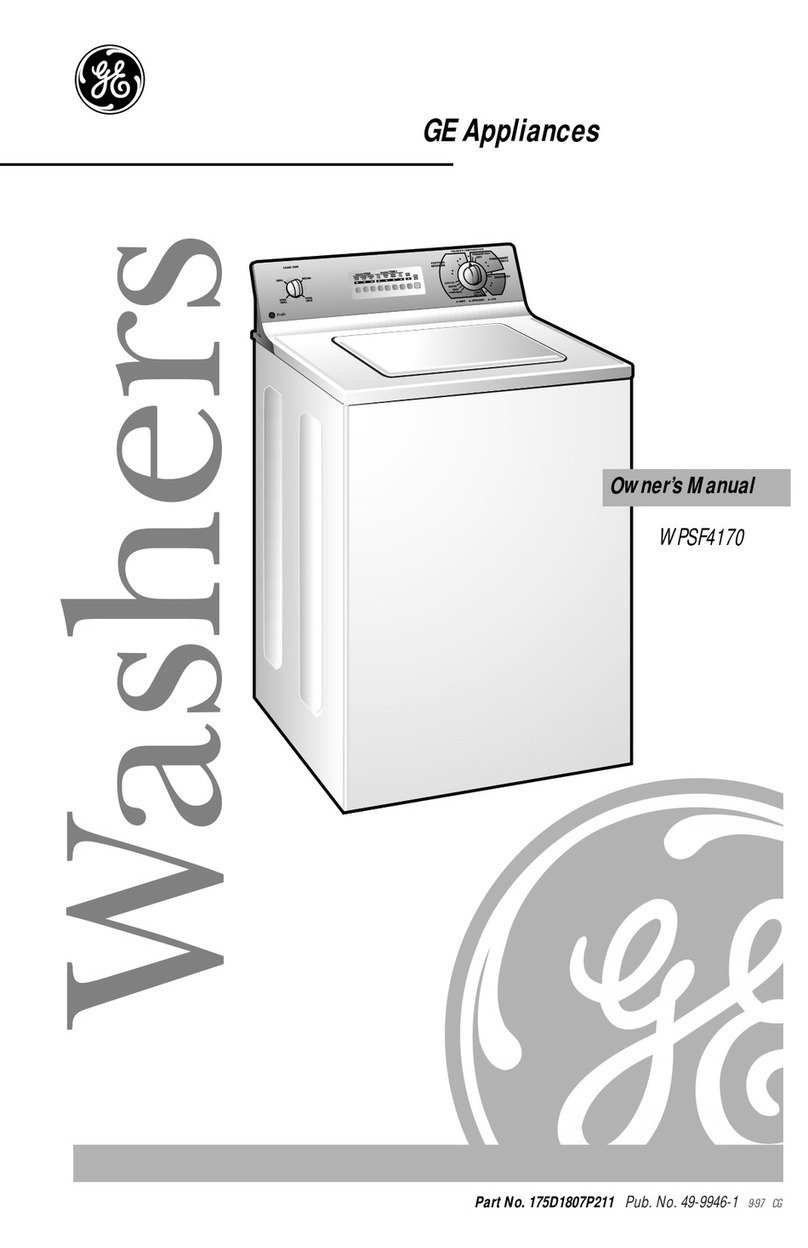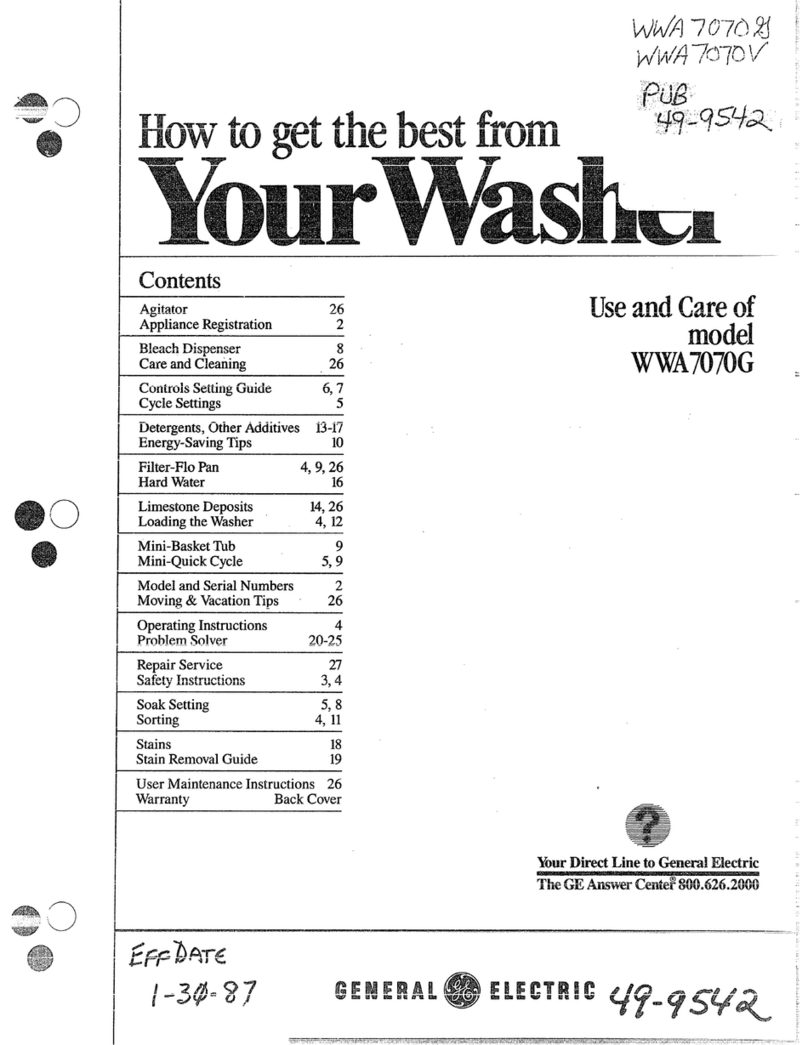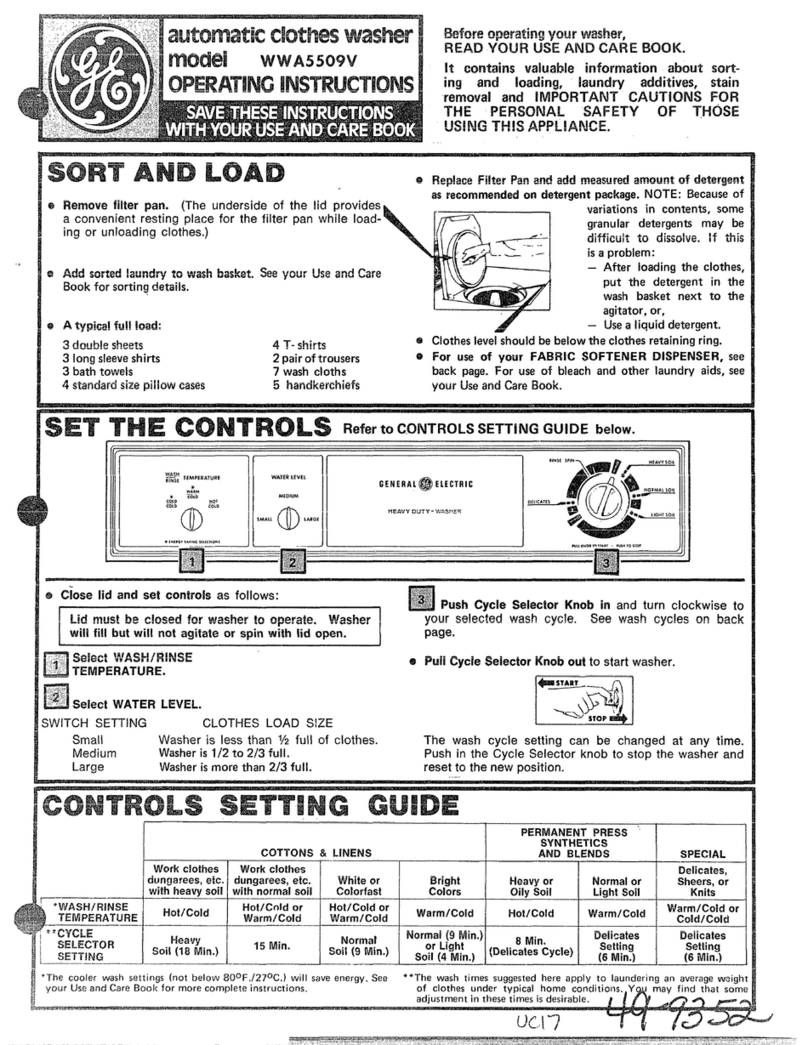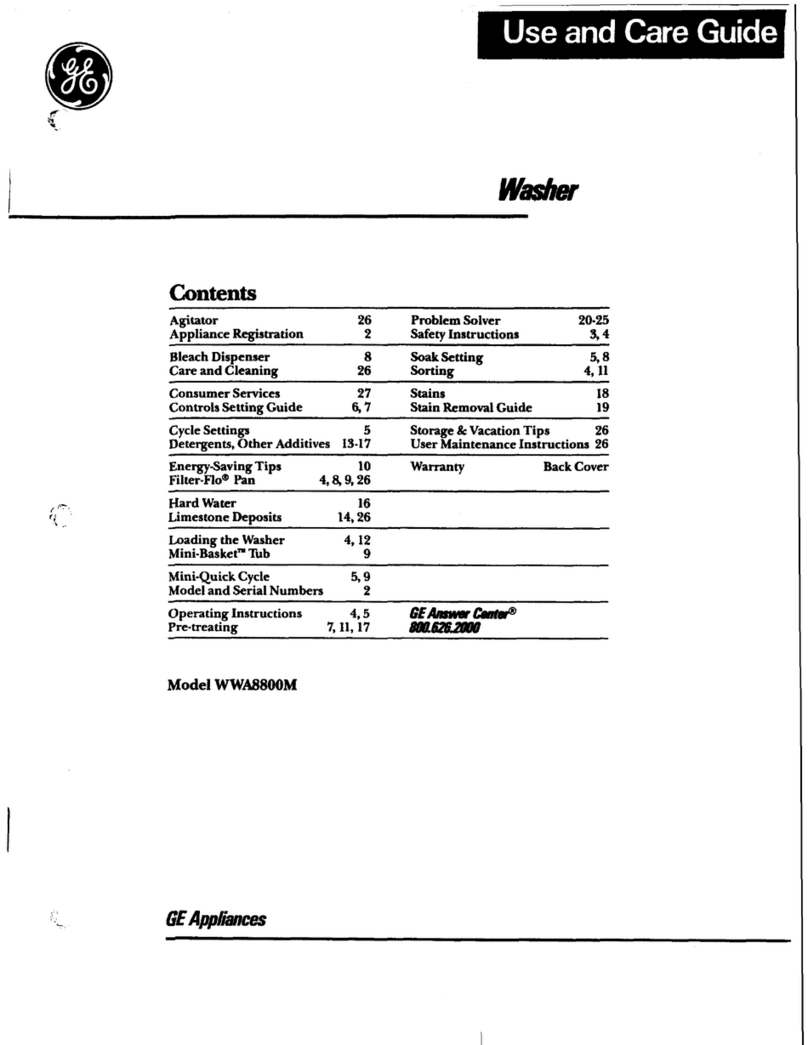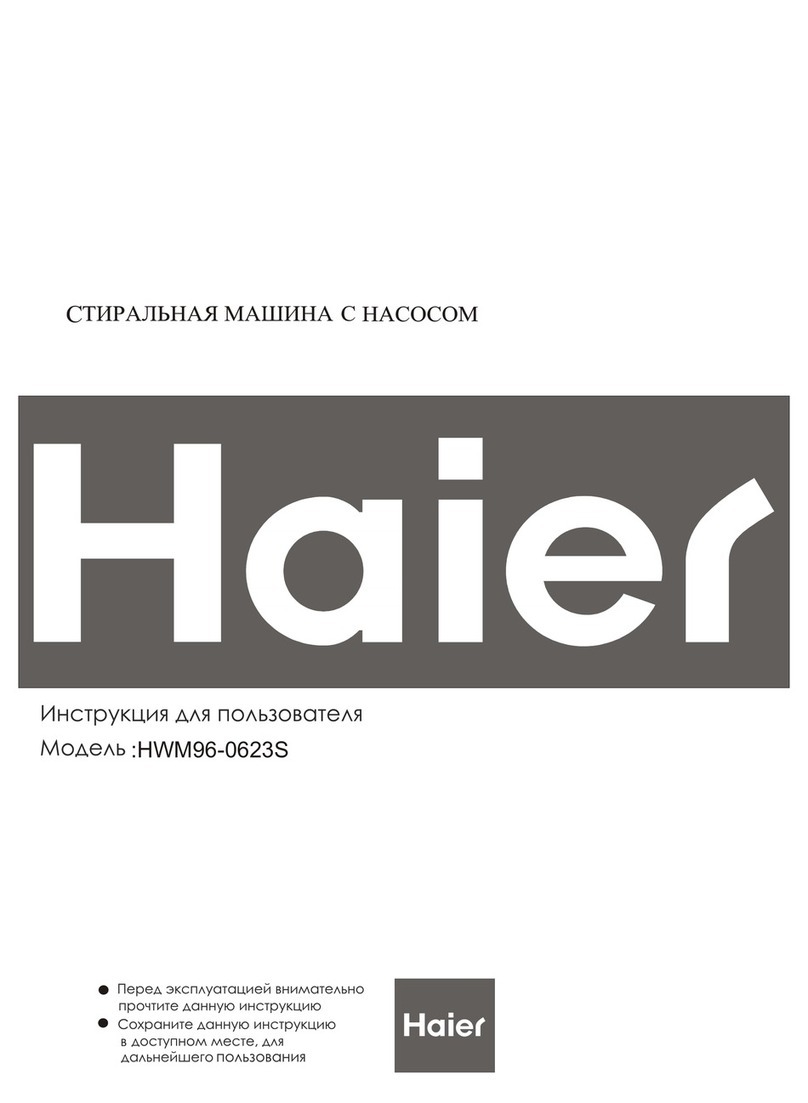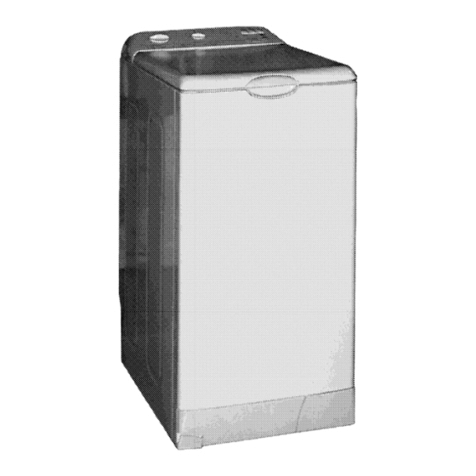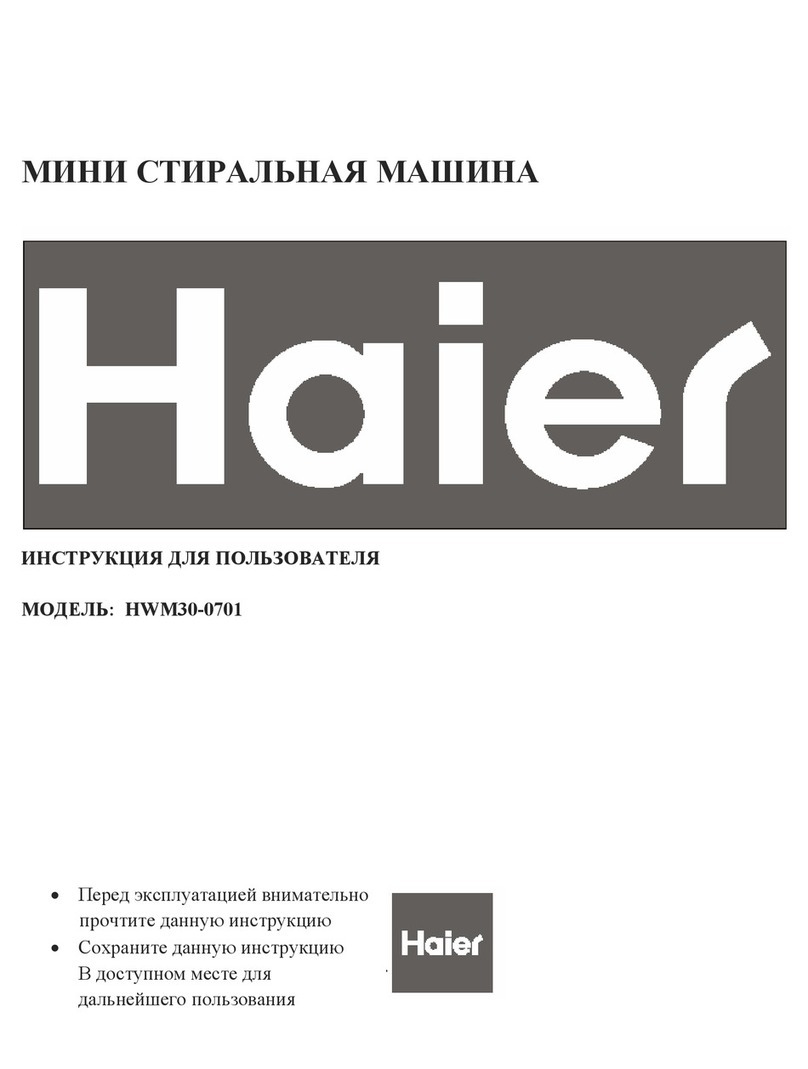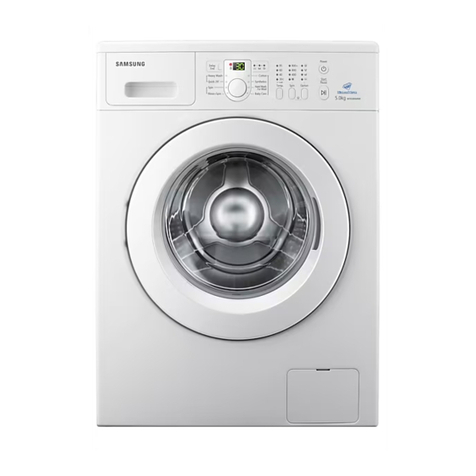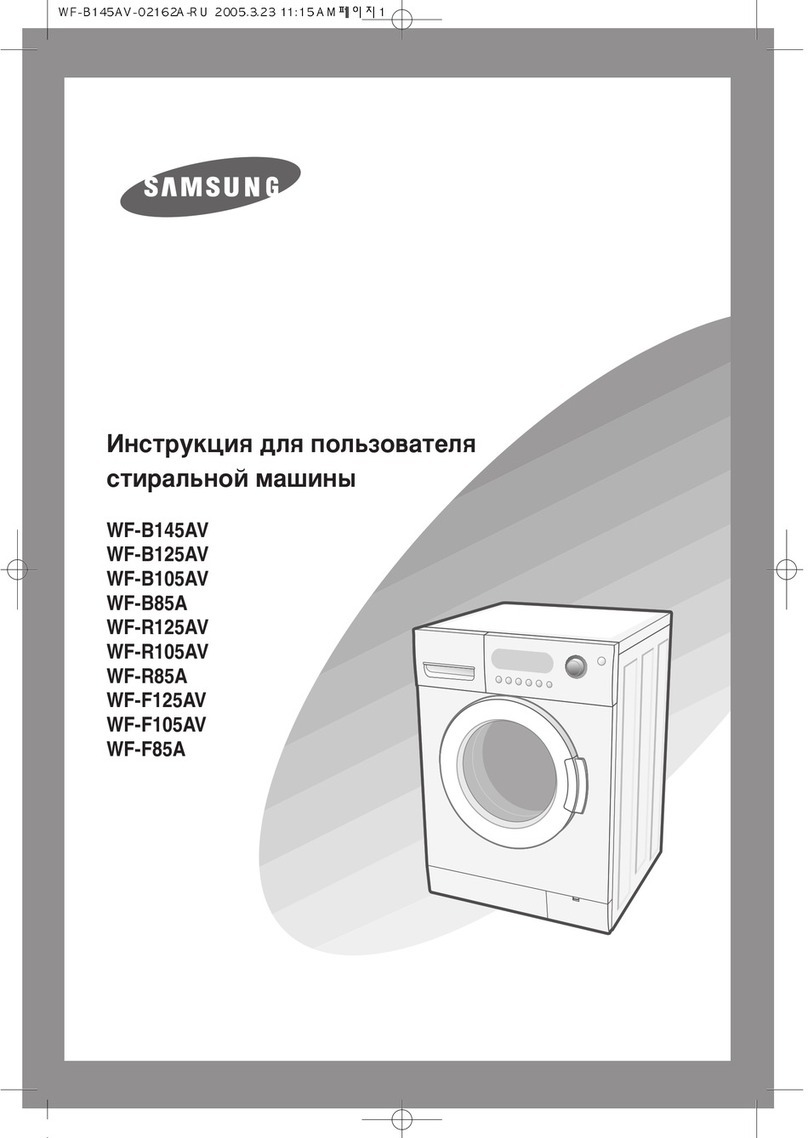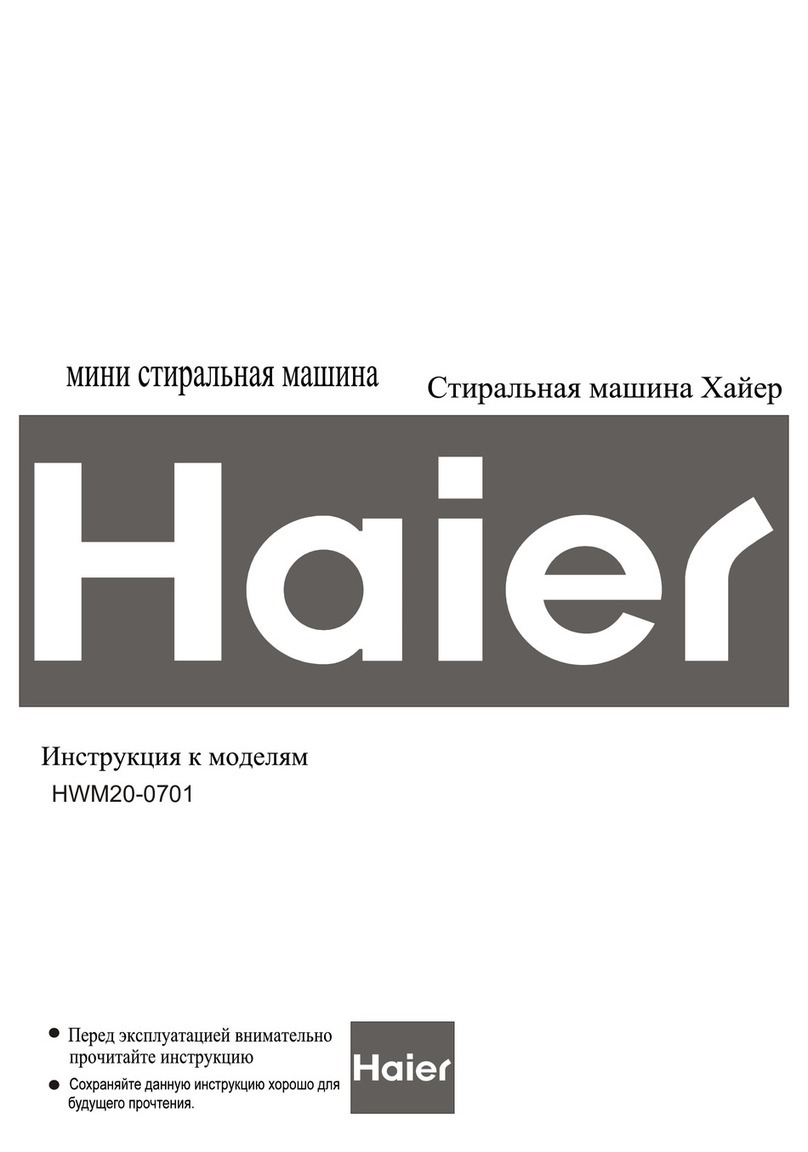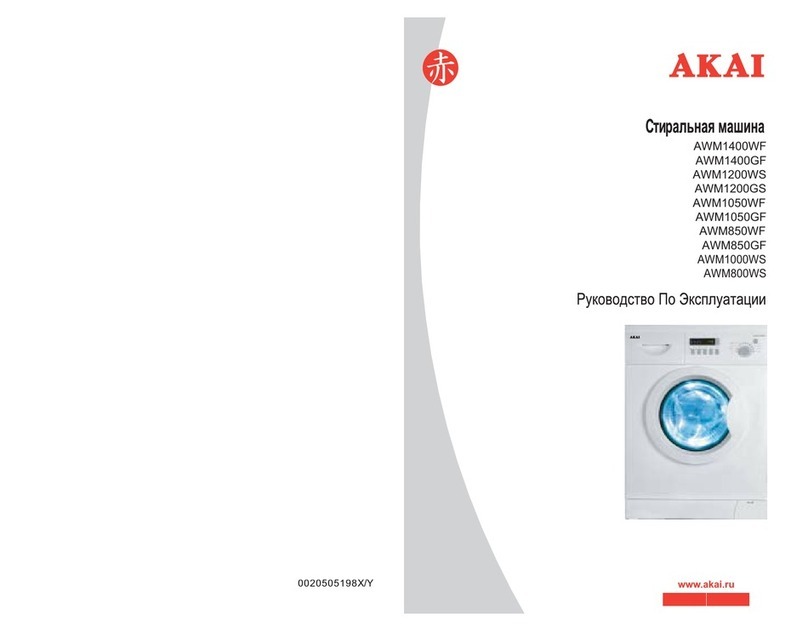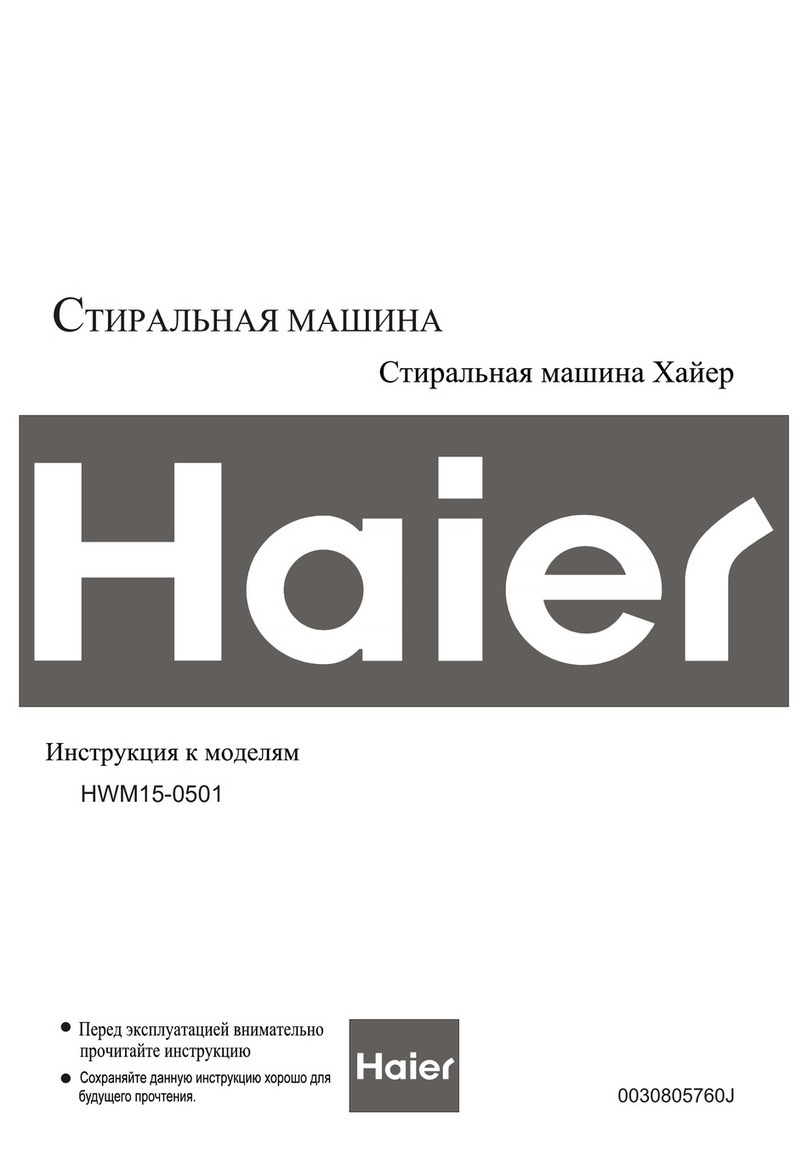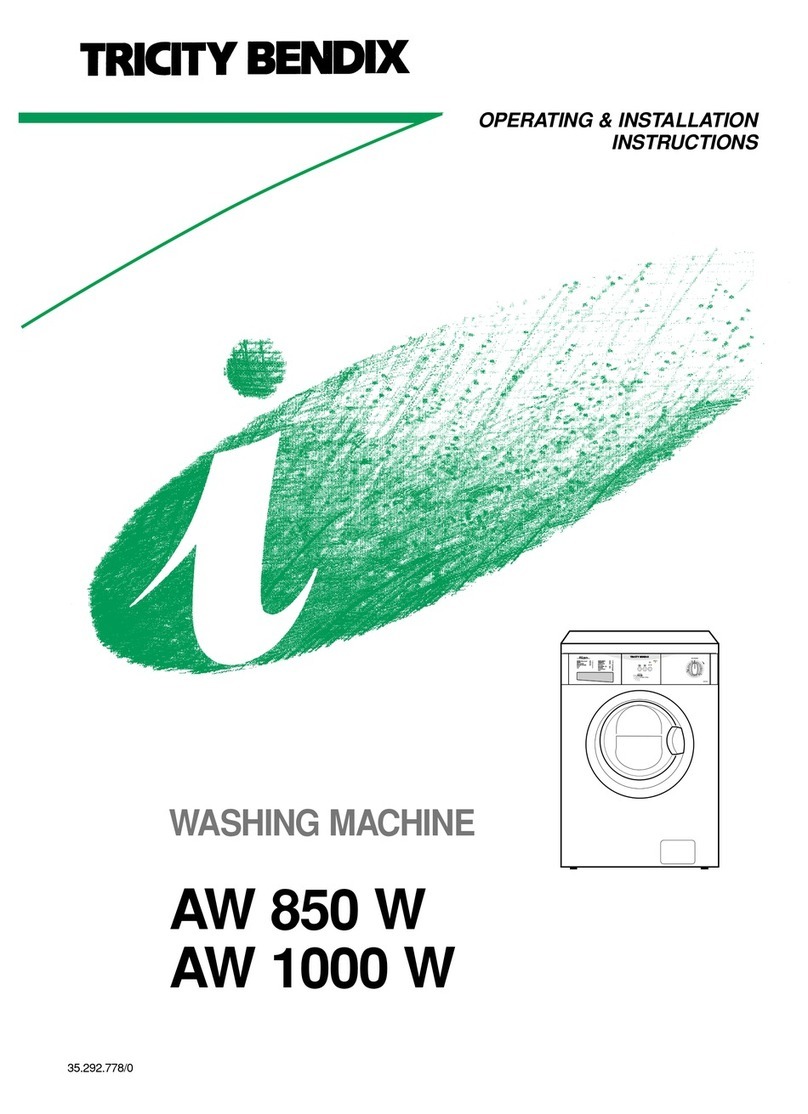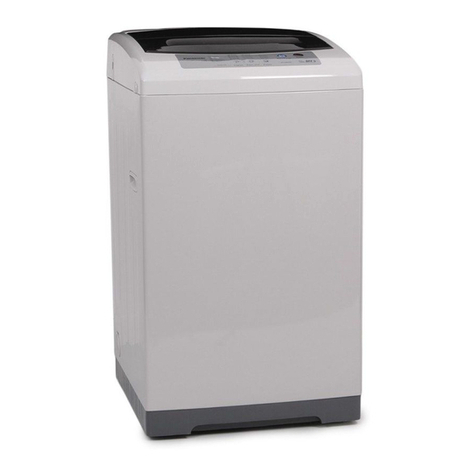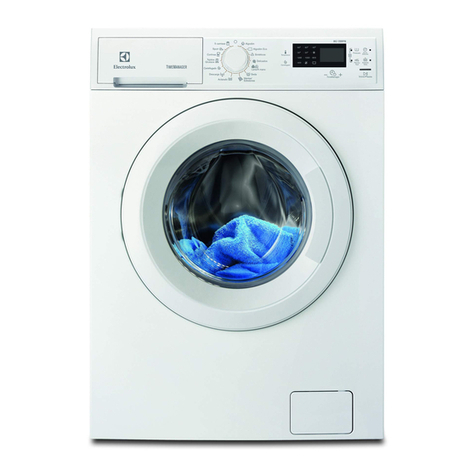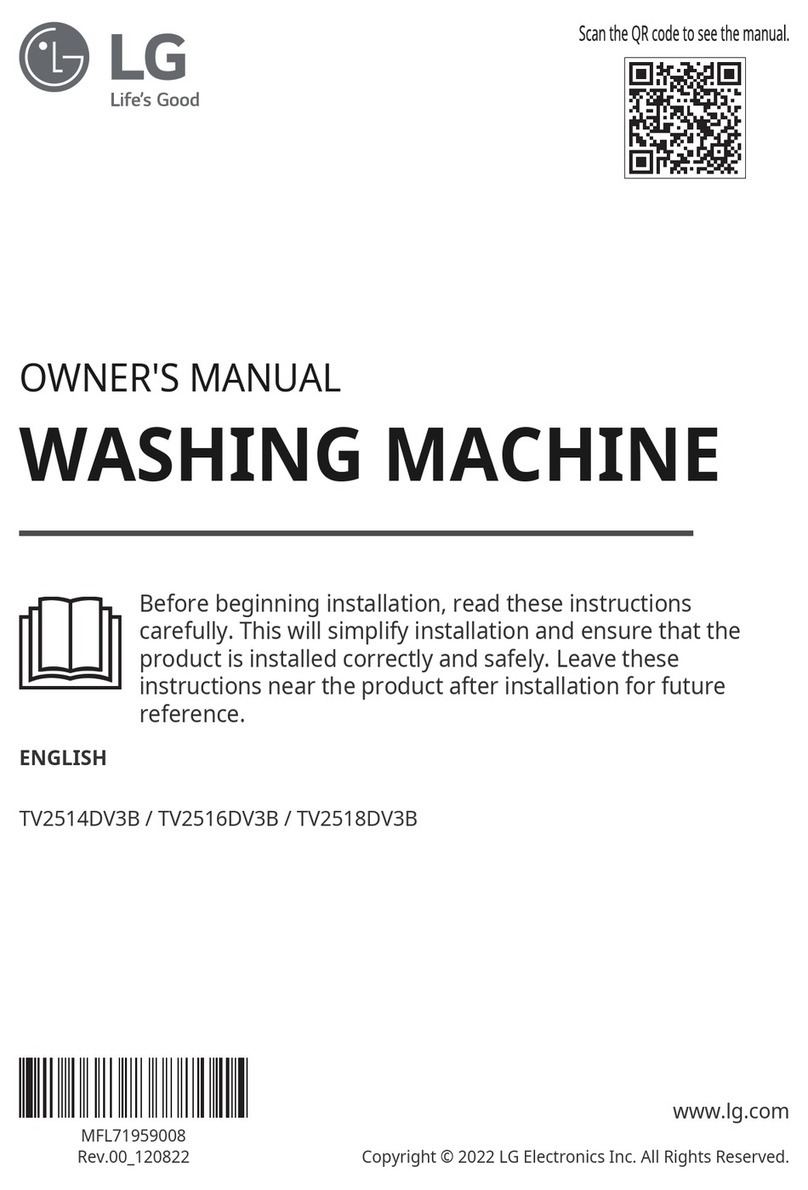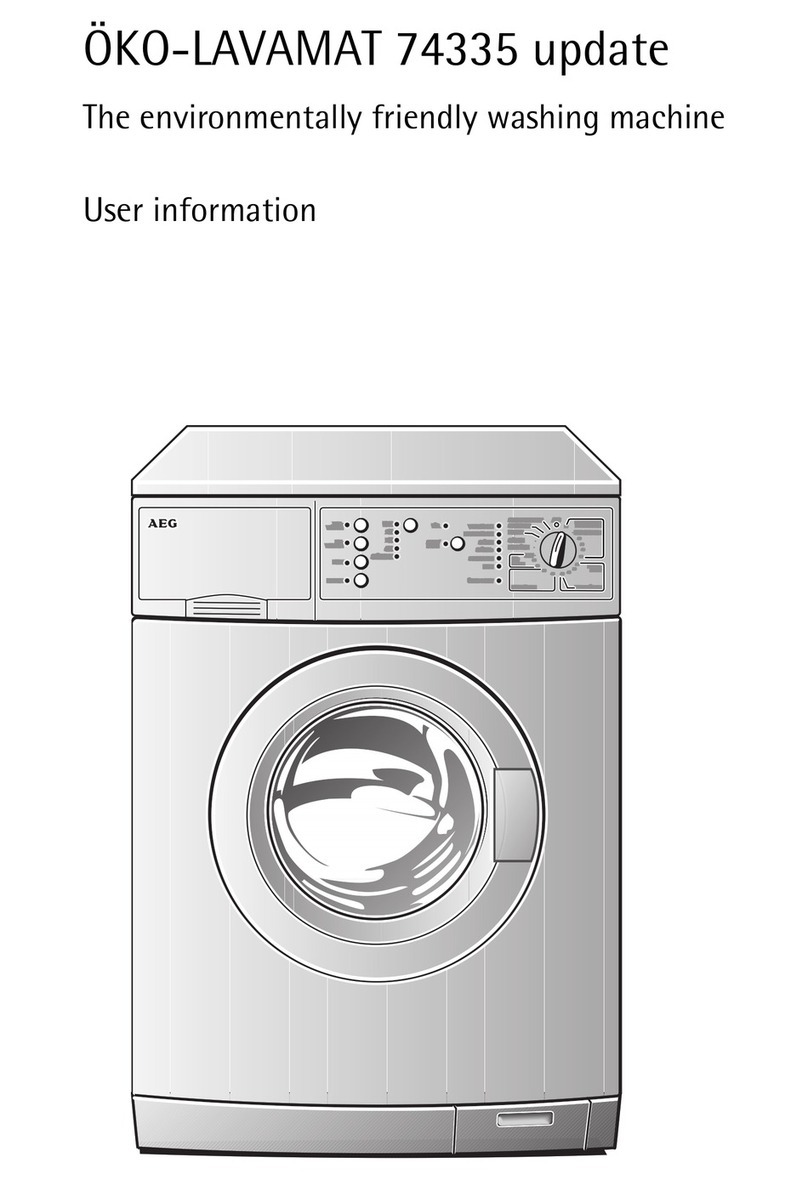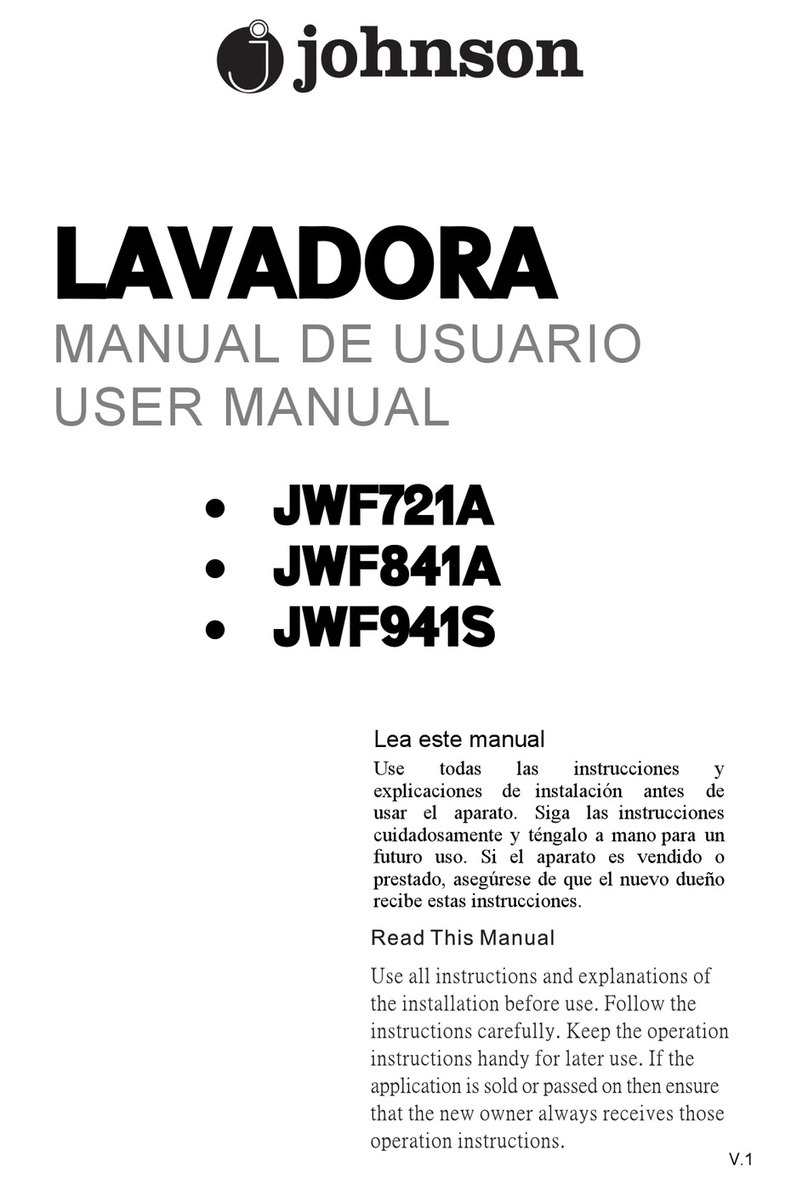BleachDispemer Howtomethe
soak cycle
@Use thisdispenserwith liquid
bleachonly.If youprefertouse
powderedbleach, pour it intothe
Filter-Flopan or wash basketalong
withyourdetergent. Do notput
powderedbleachintothe bleach
dispenser.
QMeasure bleach carefilly. Here
are somerecommended amounts:
LARGE WATERLEVEL—1%
cups (310ml) liquid
SMALL WATERLEVEL–213
cup (170ml) liquid
~Pour measured amount of liquid
bleachdirectlyintobleachdispenser.
~Do not overfi!lorallowdispenser
to overflow.Avoidsplashing.
Undiluted bleach can cause fabric
damage.
~Never pour undiluted liquid
bleach directly onto clothes or
into the Washbasket.
II Aulo,nwR!2Ee09 ExtraClean Cycles I
1~ nn,,m,!0,,,,,rumIn,,., I
~‘dSOAKCYCLE5’setting
temperaturewillautomaticallybe
cold,
@If ahotor warmsoak is
desired, setthe WASH/WNSE
TEMPERATURE switchto
“HoT/~OLD” or “WARM/COLD”
and turn the CycleSelectorknob to
“NOMAL” intheRegularCycles.
Start thewasher.After washerfills
and beginsto agitate, pushin the
CycleSelector knoband turn to
“Soak Cycle:’Pull out the Cycle
Selectorknob to completethe cycle.
*Foran extendedsoak, allowthe
washerto fill and agitatefor afew
minutesto dissolvethe soaking
agent. Then push in the Cycle
Selector knob to stopthe washer
(keep lid closed)andallowtosoak
foraslongasdesired.After
desiredsoakperiod,pulloutthe
CycleSelectorknobtocomplete
thecycle.
Howtousethe @
The Filter-Flopanisthe lintfilter.
PositiontheFilter-Flo pan on the
agitatorafter loadingclothes into
the washer.Lint iseasily seen and
removedafter the washis finished.
NOTE: DonotusetheFilter-Flopan
as awash basket. Do not put any
itemsto be washedin the Filter-Flo
pan. Do notplace detergentpackets
in theFilter-F1opan.
~Unciernormalsoilconditions,wash
in water above 80”F.(27°C.), This
~enedly meansusingtheWm Wash
@
temperaturesettingon yourwasher—
temperatures approximately 90° to
110°F. or hand comfortable, If you
noticethatsoilhasaccumulated after
severalcollsec~itivewashings,useHot
Washoccasionally,ifsafeforfabrics.
oT1.~t~lWJZ~Sh]essoften. Save
:~rtit;lzsoi’tl~etia~~-]etype of fabric
~]]l~jl1/(31,]hfil’c:3.fu!i[Oad.
.
~If youmust wash smaller loads,
adjust the amount ofwater. Small
loadsshouldhavelowerwater levels.
~Washin off-peak utility hours.
Yourlocal utility can tell yolJwhi~~.
are the off-peak l~ours. (’
‘t )
L.
